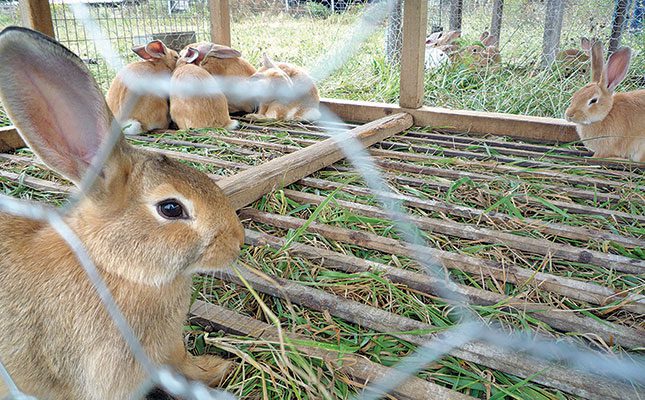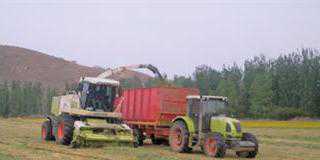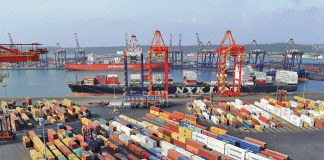
Photo: Pixabay
Rabbit farming in South Africa has been a niche agricultural industry over the past 10 years, with limited production and markets compared with other livestock industries. However, there have been some notable trends and developments during this period in terms of production.
Despite its somewhat limited scope in South Africa, global rabbit production is significant in many countries. According to the National Agricultural Marketing Council (NAMC), for example, 1,48 million tons of rabbit meat were produced in 2017. The Food and Agriculture Organization of the United Nations estimates that around 1,2 billion rabbits are slaughtered globally on an annual basis.
In 2017, China was the world’s leading producer, with 62,9% of global production, followed by North Korea (10,4%), Spain (3,9%) and Egypt (3,8%). By the end of 2019, the NAMC says, Germany, Belgium and Italy were the leading importers of rabbit meat, accounting for 21%, 19,2% and 9,3% of global imports respectively.
In its report on rabbit meat production in South Africa, the NAMC reports that according to Trade Map, in 2020, the estimated global monetary value for a ton of rabbit meat was US$5 135 (about R81 000, based on the US dollar/rand exchange rate in 2020).
However, some countries were paying much more than this average, with Switzerland, for example, paying US$8 644/t (R136 000) in 2020, Luxembourg paying US$8 480/t (R133 000), Lithuania US$6 573/t (R103 000), Poland US$6 420/t (R101 000), and the Netherlands US$6 142/t (R96 000).
The NAMC says that in the case of live rabbit imports, Belgium accounts for almost 50% of global imports. Of this, 88,8% is imported from the Netherlands, with Poland supplying 6,7% of Belgium’s live rabbit imports.
The majority of rabbits raised in South Africa are for meat production, but a small percentage are raised for wool and fur. However, local demand remains low, with more than 80% of South Africa’s rabbit meat being exported, largely to other African countries.
According to the NAMC, Lesotho accounted for 82% of all rabbit meat exported from South Africa, followed by Nigeria at 10%. The United Arab Emirates accounted for 8%. In terms of live rabbit exports, South Africa exported to Zimbabwe (72% share), Ghana (11%), Zambia (11%) and Mozambique (6%).
Popularity abroad
In Europe, rabbit farming has a long history and is a significant industry in countries such as France, Italy and Spain. These countries have well-established markets for rabbit meat, and demand has been increasing in recent years due to its nutritional benefits and perceived sustainability compared with other meats.
In North America, rabbit farming is a small industry that is focused primarily on niche markets such as direct-to-consumer sales, specialty food stores, and high-end restaurants. The industry has seen some growth in recent years, particularly in urban areas where there is a demand for locally raised, sustainable meat products. However, the industry is also facing challenges related to animal welfare concerns and competition from imported rabbit meat.
In Asia, rabbit farming is a relatively new industry but has been growing in recent years due to increasing demand for rabbit meat and fur. Countries such as China, Vietnam and the Philippines have seen significant growth in their rabbit farming industries, with both large-scale commercial farms and small-scale backyard operations. The demand for rabbit meat and fur in these countries is driven by factors such as traditional medicine practices and fashion trends.
Increasing demand for sustainable and ethical meat products, rising incomes and changing dietary preferences are some trends that may lead to the expansion of the global industry in years to come. The health benefits of rabbit meat is also a trend to consider, with rabbit meat considered leaner than other types of meat, while still high in protein.
Challenges to rabbit farming expansion
One of the main challenges facing the rabbit farming industry in South Africa is a lack of formal market channels. This means that while some farmers can sell their produce to speciality food stores and restaurants, many other farmers struggle to find buyers for their rabbit meat.
Animal welfare concerns may also hamper further expansion of the industry, especially as it relates to housing and handling practices.
In order to remedy this situation, it is important that welfare and handling practices are standardised across the industry amongst commercial producers. An initiative such as the Pork360 project, run by the South Africa Pork Producers’ Organisation, may thus be worth considering in this industry.
Another challenge is disease management, with rabbits susceptible to diseases such as myxomatosis and viral haemorrhagic disease. These can cause significant losses for farmers if not managed properly. Traceability thus becomes important.
As with other farming concerns, limited access to finance remains a serious challenge. Without economies of scale, it will be difficult for farmers to become profitable in this industry. Moreover, very little is currently understood about rabbit farming in South Africa. Greater education about rabbit farming and the benefits of rabbit meat consumption is important to expand the local industry.
As South Africa receives substantially less than the market average on its export markets, the NAMC says it is important for the country’s producers to benchmark the product produced by countries like the Netherlands, which receives significantly more than the average price per ton.
Opportunities for rabbit farmers
The NAMC reports that the untapped export market potential of rabbit meat is valued at R1,8 billion. The EU, valued at R1,6 billion, remains the biggest untapped export market. Germany, Belgium and France lead this list at R400 million, R251 million and R146 million of untapped export potential respectively. East Europe and Central Asia, says the NAMC, represent untapped market potential of around R100 million.
Southern Africa, it says, represents untapped market potential of around R103 000. Despite this, numbers in terms of South Africa’s actual rabbit production remain scarce, and it could not be ascertained how much rabbit meat for export South Africa is actually producing. However, there remains great market potential for current or future rabbit production if the aforementioned challenges can be addressed.
While untapped market potential shows great opportunities, there are some aspects that must be kept in mind, which the NAMC lists as follows:
In Germany, the key suppliers of rabbit meat are Hungary, Belgium, China and France. They account for 28,1%, 22,7%, 19,9% and 12,9% share of all Germany’s rabbit meat imports respectively. South Africa’s current exports to Germany are marginal at only R62 740 in 2019. This is around 0,1% share of Germany’s imports.
The price of South Africa’s rabbit meat was about R62 740/t in 2020, which is almost 25% lower than the global average price of R80 568/t. Countries such as Austria and Switzerland exported small volumes (2t each) of rabbit meat to Germany, which also only accounted for around 0,1% of German imports.
However, they received substantially more than South African exporters at around R149 000/t (Switzerland) and R110 000/t (Austria).
In France, China is the key supplier with a market share of 45,5%, followed by Belgium (24,9%) and Spain (12,3%). South Africa only had a market share of 0,1%. However, South Africa received marginally more per ton in this country at R86 295.
In Belgium, the dominant suppliers of rabbit meat are China, Argentina and France. South Africa has not exported to this market.
Read the full NAMC report.













